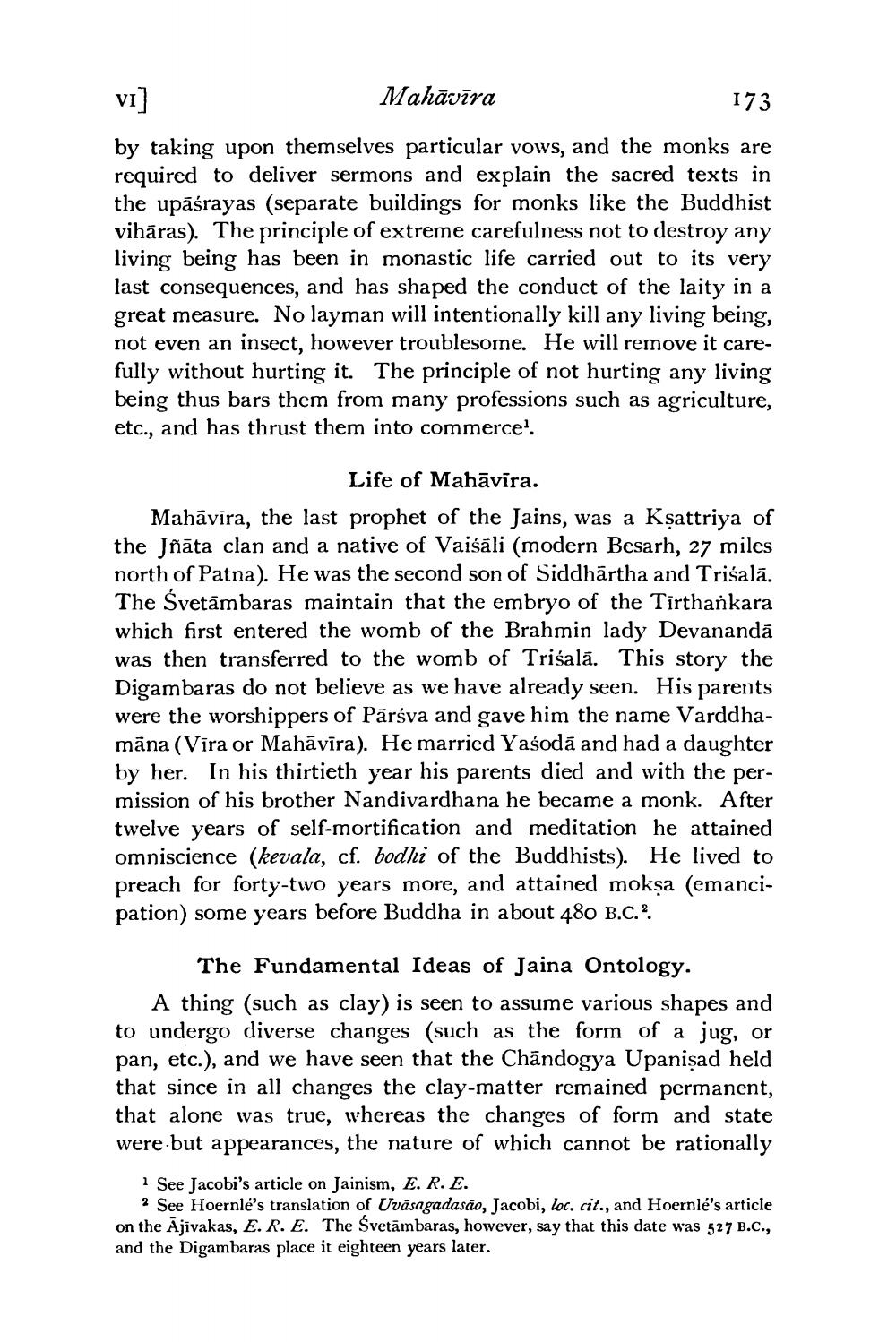________________
VI]
Mahavira
173
by taking upon themselves particular vows, and the monks are required to deliver sermons and explain the sacred texts in the upāśrayas (separate buildings for monks like the Buddhist vihāras). The principle of extreme carefulness not to destroy any living being has been in monastic life carried out to its very last consequences, and has shaped the conduct of the laity in a great measure. No layman will intentionally kill any living being, not even an insect, however troublesome. He will remove it carefully without hurting it. The principle of not hurting any living being thus bars them from many professions such as agriculture, etc., and has thrust them into commerce'.
Life of Mahāvīra.
Mahāvīra, the last prophet of the Jains, was a Kṣattriya of the Jñata clan and a native of Vaiśāli (modern Besarh, 27 miles north of Patna). He was the second son of Siddhartha and Triśalā. The Svetambaras maintain that the embryo of the Tirthankara which first entered the womb of the Brahmin lady Devanandā was then transferred to the womb of Trisala. This story the Digambaras do not believe as we have already seen. His parents were the worshippers of Pārsva and gave him the name Varddhamāna (Vīra or Mahāvīra). He married Yasoda and had a daughter by her. In his thirtieth year his parents died and with the permission of his brother Nandivardhana he became a monk. After twelve years of self-mortification and meditation he attained omniscience (kevala, cf. bodhi of the Buddhists). He lived to preach for forty-two years more, and attained mokṣa (emancipation) some years before Buddha in about 480 B.C.2.
The Fundamental Ideas of Jaina Ontology.
A thing (such as clay) is seen to assume various shapes and to undergo diverse changes (such as the form of a jug, or pan, etc.), and we have seen that the Chandogya Upanisad held that since in all changes the clay-matter remained permanent, that alone was true, whereas the changes of form and state were but appearances, the nature of which cannot be rationally
1 See Jacobi's article on Jainism, E. R. E.
2 See Hoernle's translation of Uvāsagadasão, Jacobi, loc. cit., and Hoernlé's article on the Ajivakas, E. R. E. The Svetambaras, however, say that this date was 527 B.C., and the Digambaras place it eighteen years later.




